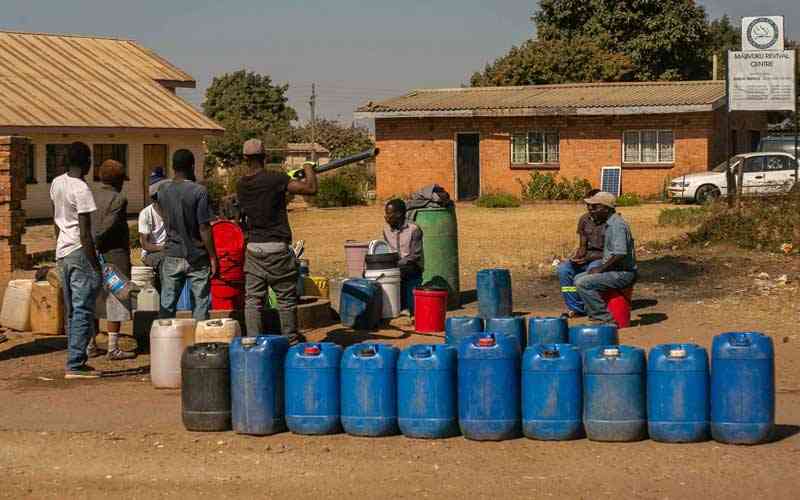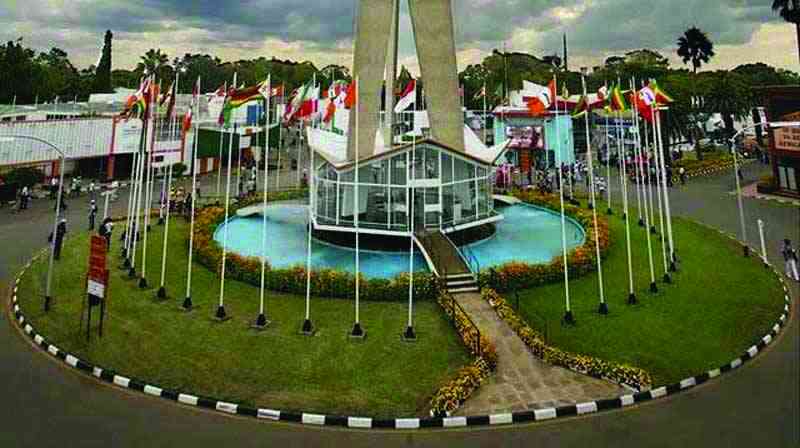
ZIMBABWE’S approach in addressing a countrywide water crisis has plunged most cities into cholera red zones as infections rise.
Health and Child Care minister Douglas Mombeshora this week discussed the cholera outbreak response in cabinet.
As at October 21 2023, Zimbabwe’s cumulative suspected cholera cases were 5 338 with 5 090 recoveries.
Manicaland and Harare provinces recorded the highest number of cholera cases in Zimbabwe, having reported 2 524 and 1 654 cumulative cholera cases, respectively by Saturday.
According to a Cabinet press briefing, "poor sanitation and low safe water coverage" had caused the cholera outbreak, particularly in Harare.
Twelve boreholes were drilled in Buhera through a borehole drilling project under the Ministry of Health and Child Care.
So far, the outbreak has killed more than 100 people since February this year. The country has been struggling to contain the spread of the cholera outbreak, with the government announcing measures amid fears of a repeat of the 2008 outbreak that sparked a “national emergency”.
Cholera cases have been reported in all 10 provinces, with the most alarming spikes in the south-eastern provinces of Masvingo and Manicaland. Harare Residents Trust director Precious Shumba said the lack of will to address the current water crisis was concerning.
- Chitungwiza sewer infrastructure collapses
- Chitungwiza sewer infrastructure collapses
- Nurses fume over paltry govt loans
- 'Apostolic sects frustrating fight against measles'
Keep Reading
“For a good start, the Harare City sits on top of its main water sources. This means that all the dirt generated in Harare, Epworth and Chitungwiza is washed down into the streams leading to Lake Chivero which makes it forever polluted,” he said.
“Industrial waste, untreated sewer and other toxic substances being discharged into the tributaries and streams feeding Lake Chivero continue to flow unabated.
“Sustainable water systems should provide adequate water quantity and appropriate water quality for a given need, without compromising the future ability to provide this capacity and quality.
“The national government should provide timeous grants to local authorities for water and sanitation services without waiting for a crisis to break out. Replacement of broken-down pipes becomes a top priority before we even begin to address the pumping and treatment capacity of the councils,” Shumba added.
In a quest to address the water situation, the government recently directed the Zimbabwe National Water Authority (Zinwa) to oversee the management of Harare City Council water. Urban local authorities are mandated by the Urban Councils Act (Chapter 29:15) to provide water and sanitation services to areas under their jurisdiction.
In recent years, there have been serious outbreaks of cholera, typhoid and other waterborne diseases.
From 2008 to 2009, Zimbabwe suffered a serious cholera outbreak with over 90 000 cases reported in 60 out of 62 districts. About 4 300 deaths were recorded.
The year 2020 saw the closing of the city’s main water treatment plant, Morton Jaffray Water Works, after shortages of aluminum sulphate, the major water treatment chemical.
“The government can strategically intervene to build capacities of local authorities to pump and treat water and sewerage. Local authorities cannot sustain service delivery from ratepayers alone,” Shumba said.
“The cost of water treatment chemicals is multiplied tenfold, thus a huge challenge for the council of Harare. Using around nine water treatment chemicals to clean the generated water is uneconomical to the council.”
The City of Harare is using water treatment chemicals worth between US$2,5 million and US$3 million per month against a shrinking revenue collection base.
Itai Rusike, a health expert and the director of the Community Working Group on Health, told the Independent in an interview that in order to contain the cholera outbreak, cooperation between several line ministries and the interventions of the private sector, communities, civil society organisations, and development partners, were necessary.
“Cholera remains a public health problem as the disease continues to affect more than 40 districts countrywide, predominantly poor communities where access to clean and safe water and sanitation remains a serious challenge,” Rusike said.
“The persistence of cholera in these places reflects weaknesses in water and sanitation infrastructure and services, high-risk hygiene and social practices, and gaps in surveillance and healthcare systems.
“The inadequate political and financial commitments are contributing to prolonged recurrent outbreaks. More than 80% of affected districts report insufficient financing to meet their water, sanitation and hygiene targets.”
He said the outbreak in Harare was due to the consumption of contaminated water from shallow wells and boreholes, poor sanitation, overcrowding, and unplanned settlements, compounded by poor hygienic practices.
“This was associated with broken sewerage pipes resulting in waste material slippage into boreholes causing water contamination,” Rusike said.










